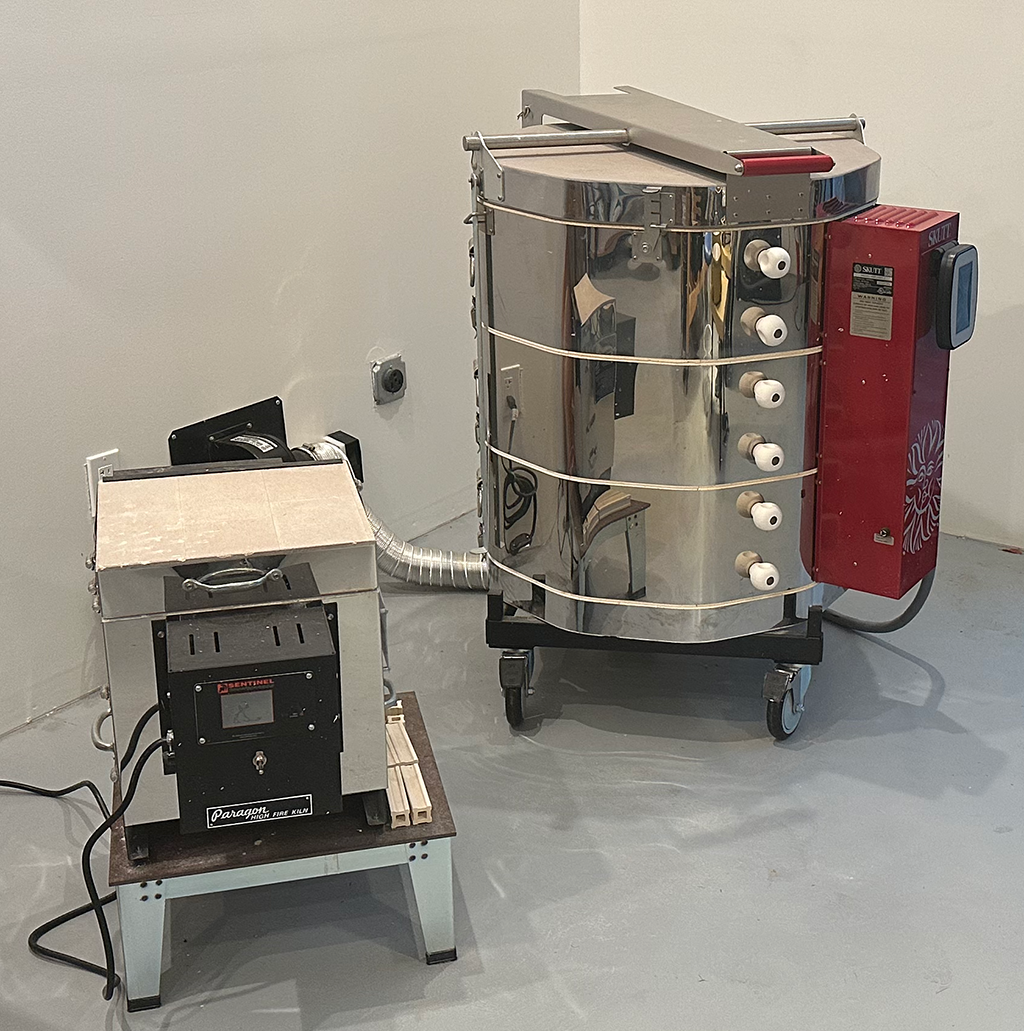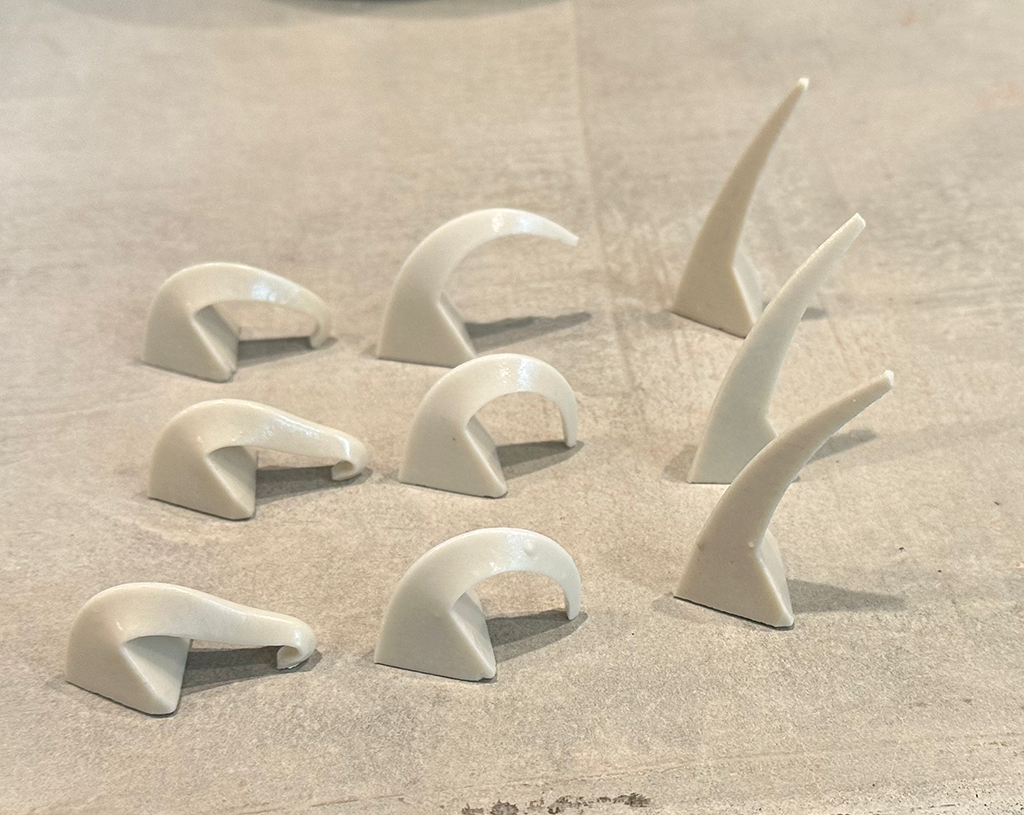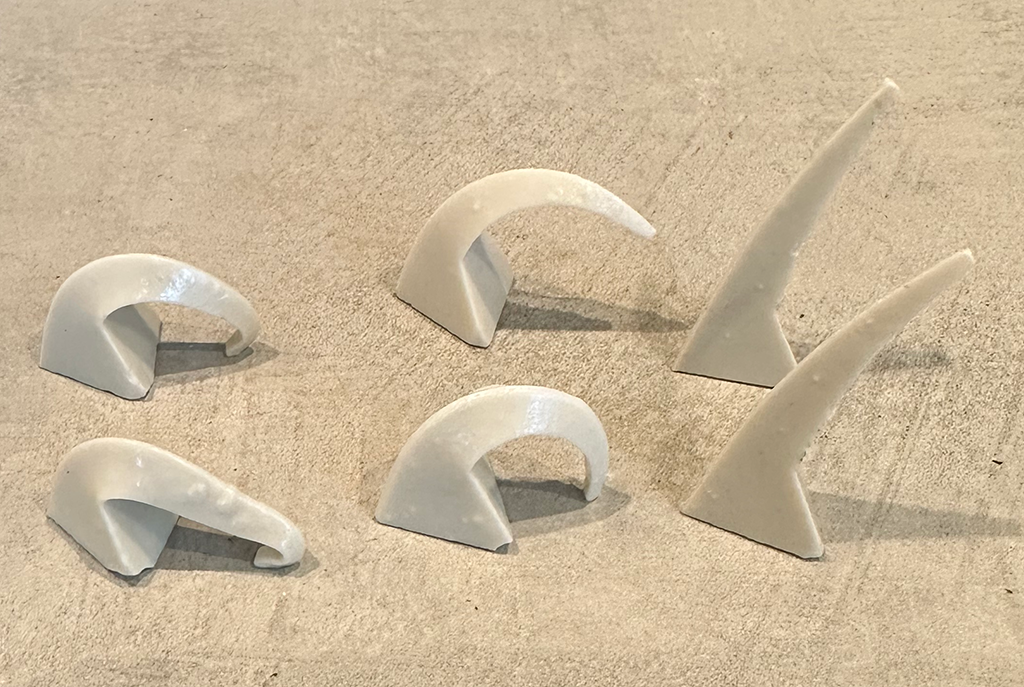Kiln Firing
The Studio Kilns and Firing Schedules

The main kiln is an electric Skutt KTM 1027-3 kiln fired to a target of Cone 6. The kiln is vented with a Skutt Envirovent 2.
The test kiln is an electric Paragon Caldera XL kiln, also fired to a target of Cone 6. It's not vented.
Being electric kilns the atmosphere is oxidation.
Both kilns are programmed with the following, slow ramp, natural cooling firing schedule, modeled from Kline.
| Ramp | Rate | Temp (F) | Hold |
|---|---|---|---|
| 1 | 80 | 180 | 01:00 |
| 2 | 200 | 250 | 0 |
| 3 | 400 | 1000 | 0 |
| 4 | 180 | 1150 | 0 |
| 5 | 300 | 1695 | 0 |
| 6 | 120 | 2210 | 00:15 |
Using self-standing cones and trial and error, Cone 6 is reached using a target temperature of ~2210 Fahrenheit rather than 2232, the canonical Cone 6 temperature. Higher target temperatures push well into Cone 7.
Here are examples of self-standing cones from each kiln from their latest firing:

The main kiln recorded 30% Cone 7 (top), 30% Cone 7 (middle) and 80% Cone 6 (bottom) with a peak of 2210 degrees Fahrenheit.

The test kiln recorded 25% Cone 7 (top) and Cone 6 exactly (bottom) at a peak of 2215 degrees Fahrenheit.
These results show both kilns are creating very similar atmospheres. Both kilns are typically cooler on the bottom. How the kilns are packed has an effect too.
Presumably the main kiln cools more slowly than the test kiln due to its larger size and thicker, 3" bricks, but this has not been measured. Thus far no observable difference has been detected.
Truth be told, with all the other variables in play, I settled on this schedule early on and have not come back to tinker with it yet, apart from modifying the peak temperature to settle into ~Cone 6 and to homogenize the kiln atmospheres. High precision is not the goal, just reasonable similarity. So far it's working.
